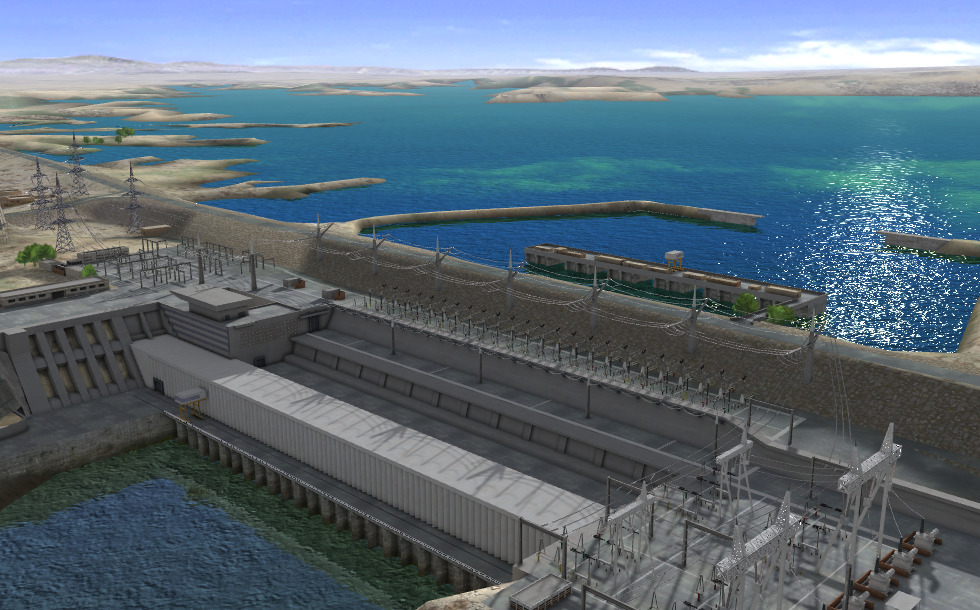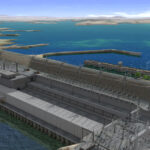The question most readers ask when they search for “Aswan Dam” is straightforward: What exactly is the Aswan Dam, and why is it so important to Egypt and the world? The clearest answer is this: the Aswan Dam is one of the most influential engineering projects of the 20th century, a structure that redefined how a nation manages water, generates energy, preserves agriculture, and negotiates political power. Its story is not only about concrete and turbines; it is about identity, ambition, loss, resilience, and the changing relationship between people and a river that had shaped their civilization for thousands of years. Understanding the Aswan Dam requires far more than memorizing dates or structural dimensions. It demands a look into why Egypt needed it, what it gained, what it lost, and how the dam continues to influence modern geopolitics, culture, climate responses, and economic planning.
This article offers a comprehensive and updated view one that does not rely on recycled summaries but instead unpacks the deeper meaning behind the dam and its place in contemporary global discussions about megaprojects, water rights, and regional stability.
A River Too Powerful to Ignore
For millennia, the Nile River dictated the rhythm of Egyptian life. It flooded every year, depositing rich black soil on its banks and leaving behind a fertility unmatched in the ancient world. Kings measured their reigns not by monuments alone but by the prosperity delivered by these annual floods. But the river was also unpredictable. Some years it rose too high, drowning homes and crops. Other years it barely rose at all, leaving farms dry, grain stores empty, and communities starving. By the 19th and 20th centuries, Egypt understood something crucial: a modern nation cannot survive on the whims of a river. If the country wanted stable agriculture, electrical power, industrial growth, and flood protection, it needed a structure strong enough to tame the Nile’s rhythms. That ambition led to the building of not one but two major dams the first Aswan Dam and, later, the much larger Aswan High Dam.
But the High Dam was more than just a wall holding back water. It became a symbol of national pride, a political beacon, a source of controversy, and a project that demanded sacrifices from entire communities. Today, the Aswan Dam remains a reminder that progress often comes with tradeoffs and that water, more than oil or gold, is the most powerful resource shaping the modern world.
A Clear, Expanded Overview Table
Below is a carefully expanded table to give readers a quick and accessible understanding of the Aswan Dam’s essential facts, functions, and impacts.
Key Insights About the Aswan Dam
| Category | Details |
|---|---|
| Primary Purpose | Water control, flood prevention, irrigation, hydroelectric power |
| Construction Era | High Dam: Mid-20th century during modern Egyptian industrial expansion |
| Nile River Role | Regulating seasonal floods, storing water for drought years |
| Energy Output | Supports a major portion of Egypt’s hydroelectric generation capacity |
| Reservoir | Lake Nasser, one of the world’s largest human-made lakes |
| Agricultural Impact | Year-round irrigation, expanded crop cycles, increased agricultural stability |
| Environmental Concerns | Reduced silt flow, ecosystem changes, coastline erosion, water stagnation issues |
| Cultural Consequences | Relocation of Nubian communities, archaeological rescue missions |
| Economic Outcomes | Boosted agricultural output and energy supply; long-term maintenance costs |
| Geopolitical Role | Central to Nile Basin negotiations and international water-sharing dynamics |
The River Before the Dam: Why Egypt Needed Control
Anyone who has walked near the Nile during its highest season knows the overwhelming force carried in its waters. Before the dam, Egypt’s agricultural system faced three major problems: irregular flooding, drought cycles, and lack of long-term water storage.
Unpredictable Flooding
Some years, the Nile overflowed far beyond its banks, washing away entire villages. Families rebuilt their homes repeatedly, and even cities like Cairo had to prepare defenses.
Severe Droughts
When the floods were too low, communities faced devastating food shortages. Entire seasons passed without enough water for crops.
Population Growth
By the mid-20th century, Egypt’s population was expanding quickly. The traditional flood-based irrigation system could no longer support millions of new residents.
A Modern Nation Required Modern Tools
Industrialization needed reliable electricity. Factories could not depend on the seasonal rises and falls of a river. Egypt needed a consistent energy source one massive enough to power a growing economy. The problem was clear: Egypt could not move forward until it controlled the river that had once controlled it.
Engineering Ambition: How the High Dam Came to Be
The Aswan High Dam was conceived as a project that would transform Egypt from a nation dependent on nature’s timing to one capable of controlling its destiny. Engineers imagined a structure so massive it could regulate the flow of the Nile all year long, collect water behind a giant reservoir, and generate enough electricity to power homes, businesses, and industry across the country.
A New Kind of Megaproject
The High Dam was one of the first megaprojects built in a newly independent Egypt. It represented self-determination the ability to shape the landscape without relying on colonial-era systems.
The Challenge of Scale
The dam required:
- vast volumes of construction materials
- thousands of engineers and laborers
- advanced hydrological planning
- relocation of communities living along the flood plains
It also required a vision of confidence a belief that the future could be constructed, not merely awaited.
Lake Nasser: A Sea Created by Human Hands
Perhaps the most dramatic result of the Aswan High Dam is Lake Nasser, a reservoir stretching deep into southern Egypt and northern Sudan. Creating this lake was essential for storing water during surplus years and releasing it during droughts.
Water Security Reimagined
Instead of relying solely on the Nile’s annual flood, Egypt now had a massive reserve of water available year-round. This fundamentally changed the country’s ability to plan for the future.
A New Landscape
Lake Nasser reshaped the geography of southern Egypt. Towns disappeared underwater. Farmland was lost. But new opportunities arose: fishing industries expanded, tourism grew, and wildlife adapted to the new ecosystem. The lake is more than an engineering feature; it is a testament to humanity’s ability to alter the natural environment on a continental scale.
Hydroelectric Power: Lighting a New Era
One of the dam’s most celebrated achievements is its hydroelectric power station, which dramatically expanded Egypt’s access to affordable electricity.
Electrification for a Growing Nation
When the turbines began spinning, villages that had lived in darkness for centuries suddenly had light. Factories could operate reliably. Schools and hospitals had dependable power. New industries emerged, supported by the stability of hydroelectric generation.
The Symbol of Progress
For many Egyptians, the arrival of electricity was not merely a convenience. It was a sign that the country was entering a new era of modernization.
Agricultural Transformation: Feeding a Nation
Before the dam, Egyptian agriculture depended almost entirely on the Nile’s seasonal flood. Farmers planted after the flood receded, and harvest cycles were rigid. The Aswan Dam changed this permanently.
Year-Round Irrigation
With controlled water release, farmers could now irrigate crops anytime during the year. This flexibility increased yields and allowed multiple planting cycles.
New Crops, New Possibilities
Some crops that were previously impossible due to water unpredictability became viable. Agricultural diversity widened, and food security improved significantly.
Economic Stability
Reliable irrigation meant farmers could take risks, invest in their fields, and plan for long-term production. This stability rippled across Egypt’s economy, supporting markets, trade, and national growth.
Environmental Tradeoffs: The Price of Transformation
No major engineering project comes without consequences. The Aswan Dam brought environmental challenges that remain subjects of scientific study and political debate.
Loss of Natural Silt
For thousands of years, the Nile carried nutrient-rich silt from its upstream tributaries. Once trapped behind the dam, this silt no longer reached farmlands or the delta, leading to:
- reduced soil fertility
- increased need for chemical fertilizers
- changes to riverbank ecosystems
Erosion of the Nile Delta
Without the annual deposit of silt, the Mediterranean Sea began slowly eroding sections of the delta. This issue remains a major environmental concern for Egypt.
Changes to Aquatic Life
The river’s natural flow patterns changed, impacting fish migration and biodiversity. Some species struggled; others thrived in the still waters of Lake Nasser.
Stagnation and Water Quality
Some areas near the reservoir experienced stagnant water, creating challenges for local communities and wildlife. These tradeoffs illustrate a difficult truth: progress often demands careful management and long-term environmental planning.
Cultural Consequences: The Nubian Story
Perhaps the most emotional aspect of the Aswan Dam’s construction is the displacement of Nubian communities, who lived along the Nile for thousands of years.
A Homeland Lost
As Lake Nasser expanded, dozens of Nubian villages were inundated. Families were relocated to new settlements far from their ancestral homes. The loss was not only physical but cultural languages, traditions, architecture, and social rhythms were disrupted.
Preserving History
At the same time, the dam’s construction sparked one of the largest archaeological rescue missions in history. Temples, monuments, and ancient artifacts were moved block by block to higher ground, including the famous Abu Simbel temples. These relocations protected heritage that would otherwise have vanished forever. The Nubian story remains a powerful reminder that progress carries human costs and that history must be preserved even in moments of change.
Geopolitical Dimensions: Water as Power
The Nile is more than a river; it is a geopolitical force. The Aswan Dam elevated Egypt’s influence in regional politics while also raising concerns among upstream nations.
Diplomacy and Water Rights
Countries along the Nile Basin must cooperate to ensure equitable water distribution. The dam became a central topic in international negotiations, particularly as other nations began developing their own water infrastructures.
The Dam as a Political Symbol
For Egypt, the Aswan Dam represented independence, strength, and self-reliance. Its construction shifted regional dynamics and continues to influence diplomacy today.
Modern Perspective: The Dam in the 21st Century
Decades after its completion, the Aswan Dam remains both a triumph and a challenge. It continues to supply water and electricity, support agriculture, and stabilize the Nile’s flow. Yet modern engineers and environmental scientists also study its long-term impacts, exploring how to:
- restore soil health
- manage delta erosion
- adapt to climate change
- improve water distribution
The dam remains essential to Egypt’s identity and economy, but it also stands as a cautionary tale about the deep complexities of controlling nature on such a scale.
Conclusion
The Aswan Dam is more than an engineering achievement. It is a narrative a story of a nation’s decision to take control of its future, of communities that adapted to enormous change, of ecosystems reshaped by human hands, and of the ongoing challenge of balancing progress with preservation. To ask “What is the Aswan Dam?” is to open a window into a century of ambition, sacrifice, innovation, and resilience. The structure continues to shape Egypt’s destiny, reminding us that the world’s greatest rivers do not merely flow through landscapes. They flow through history, culture, and the core of human identity.
FAQs
1. Why was the Aswan Dam built?
To control Nile floods, store water for drought years, support agriculture, and generate hydroelectric power.
2. What is Lake Nasser?
A massive reservoir created by the dam, used for water storage, irrigation supply, and fishery development.
3. How did the dam affect agriculture?
It allowed year-round irrigation, increased crop yields, diversified farming, and provided stability to food production.
4. What were the environmental costs?
Loss of natural silt, delta erosion, biodiversity changes, and reduced natural river flow cycles.
5. Who was displaced by the dam’s construction?
Nubian communities were relocated from their ancestral lands as Lake Nasser expanded.











